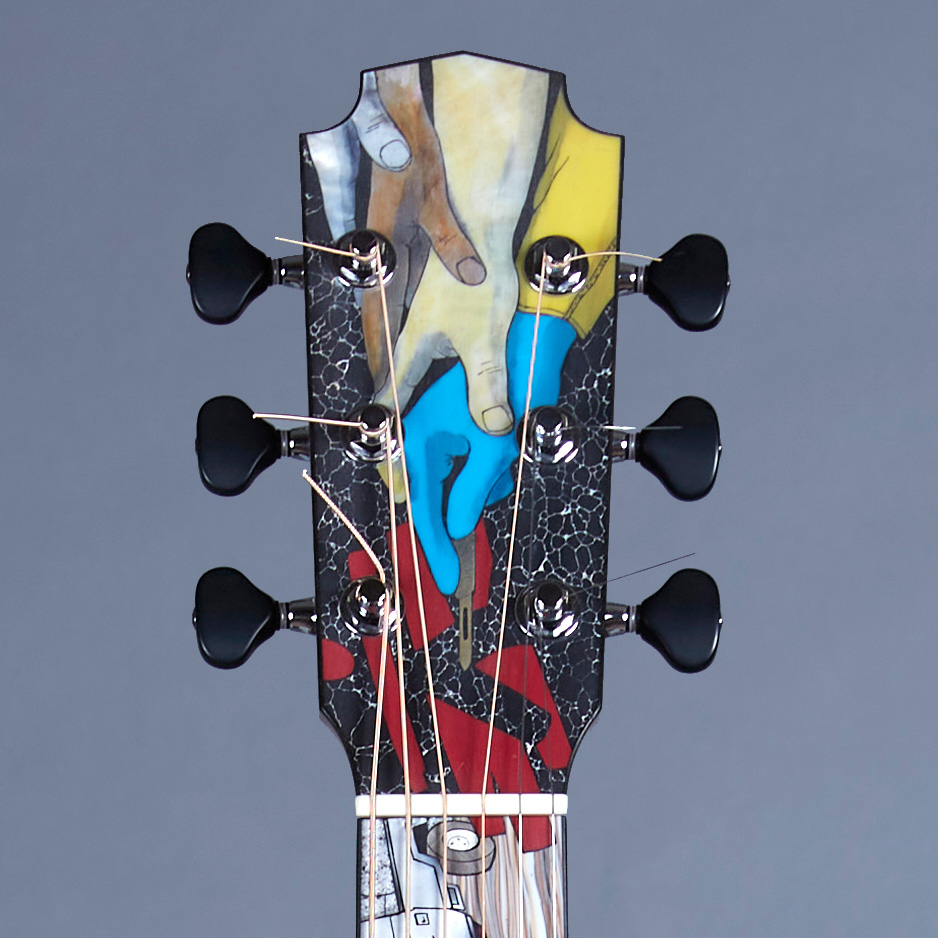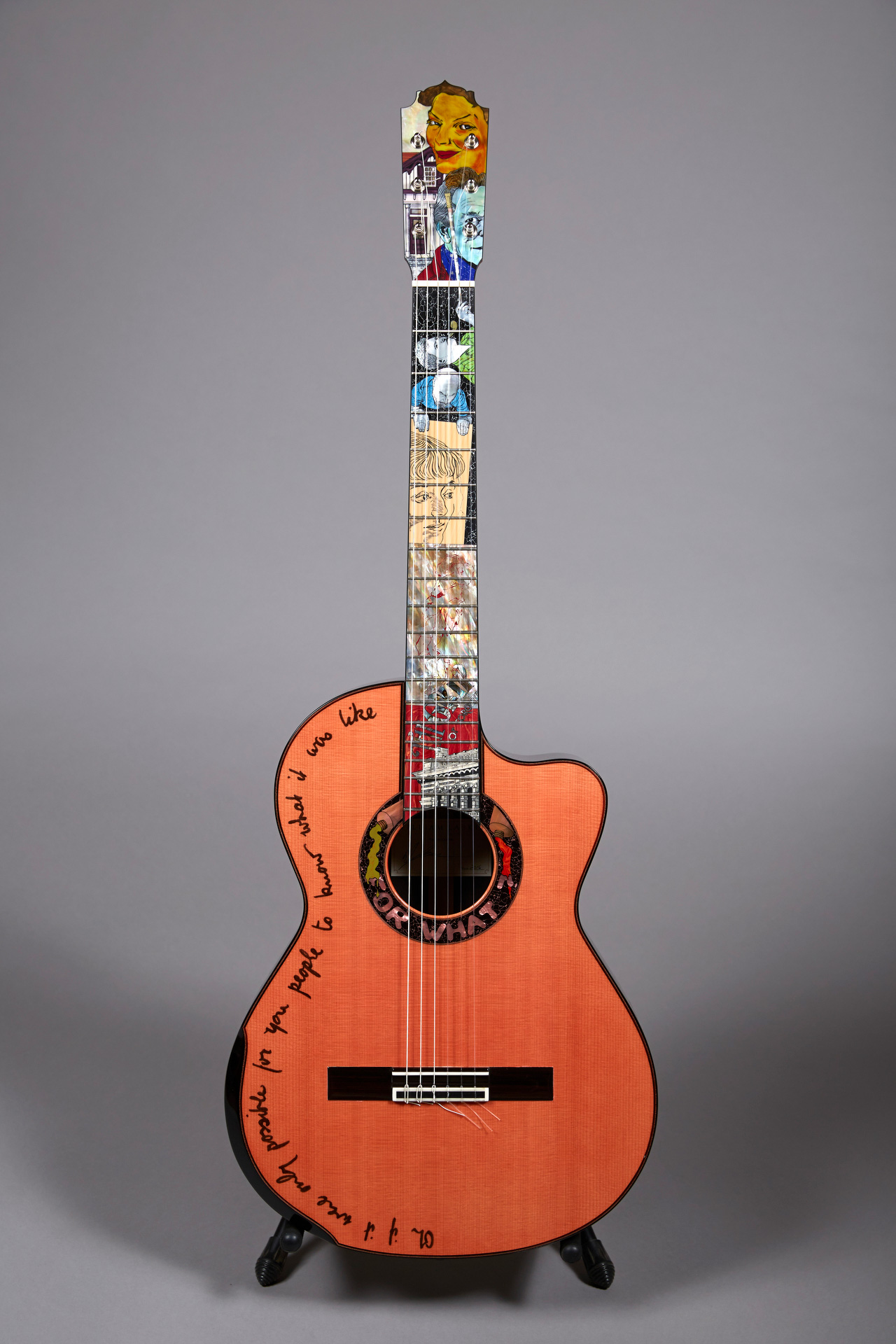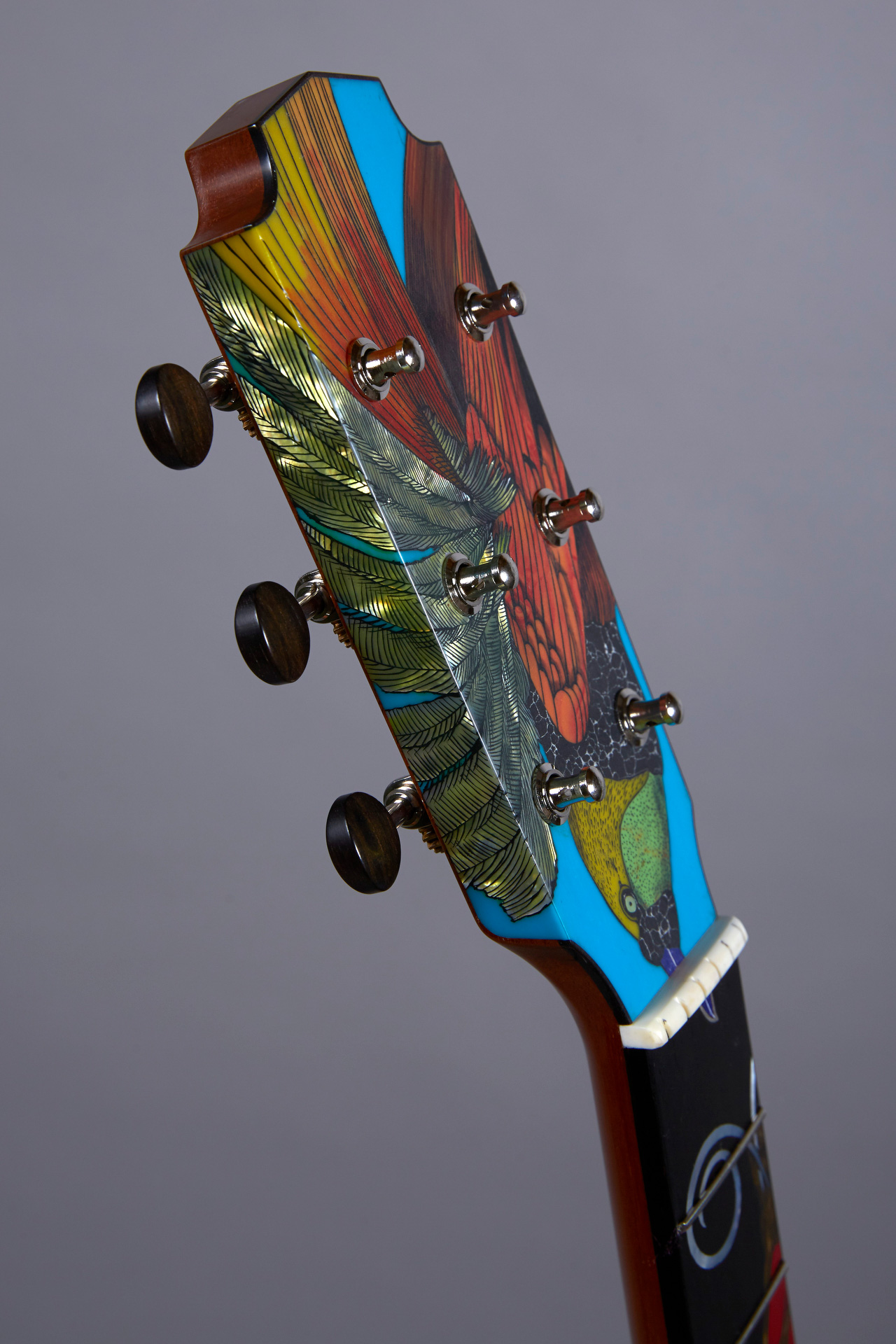What is engraved inlay?
Here’s a capsule overview… It is the result of using 9 different species of shell, 15 different types of stone, 4 different kinds of ivory and bone, 3 different metals, hand cutting them to recreate an original pencil sketch, insetting them 1.2mm. deep into a corresponding cavity in the ebony fingerboard and the ebony headstock veneer, leveling them, cutting detail into them line by line with a simple hand-held “graver” (not a power tool), then filling in those cuts with a wax/stearate/dye compound.
To successfully engrave the details of a human face, to the standards Laskin has set, averages 10 hours.
Completing a complex “narrative” inlay, running the full length of the neck, has taken up to 175 hours, more than the length of time required to build a guitar.
WHAT’S SPECIAL ABOUT LASKIN’S INLAY?
1. HIS CONCEPT AND THE MANNER IN WHICH THE SUBJECTS ARE DEPICTED. What has been described as a “quantum leap in artistic application” is evidenced by such things as the sense of movement, unusual perspectives, the visual density and depth of scenes. All are breakthroughs in the medium.
2. THE DEGREE OF REALISM achieved in a medium where historically human figures were rarely better than cartoons and “approximation” of a subject was the accepted norm. The fact that Laskin sketches from live models and does extensive research while creating a design provides the “truth” to his realism.
3. HIS USE OF MATERIALS NEW TO MUSICAL INSTRUMENT INLAY. Since ancient times elephant ivory, mother of pearl and tortoiseshell were the materials of inlay. In modern times, even before the bans of tortoiseshell and elephant ivory, mother of pearl and abalone shell were the only materials used in 99% of instrument inlay. Laskin has expanded the palette 7-fold, simultaneously bringing vivid primary colours and subtle shadings to the flat medium.
4. THE SELECTING OF MATERIALS. A piece of shell, for example, is not simply a piece of shell. It has a reflective angle; it has grain; it has a varying degree of translucency; it may have no unusual surface phenomenon or be “busy” with any one of dozens of natural patternings. Laskin has a rare consciousness about such characterisitics and uses them to a degree not seen before.
5. HIS ENGRAVING SKILL. His #6 Onglette graver is his “fine brush”, wielded with such unusual (and self-taught) skill that it attracts other recognized inlay artists from around the world to his infrequent seminars and his lectures.



